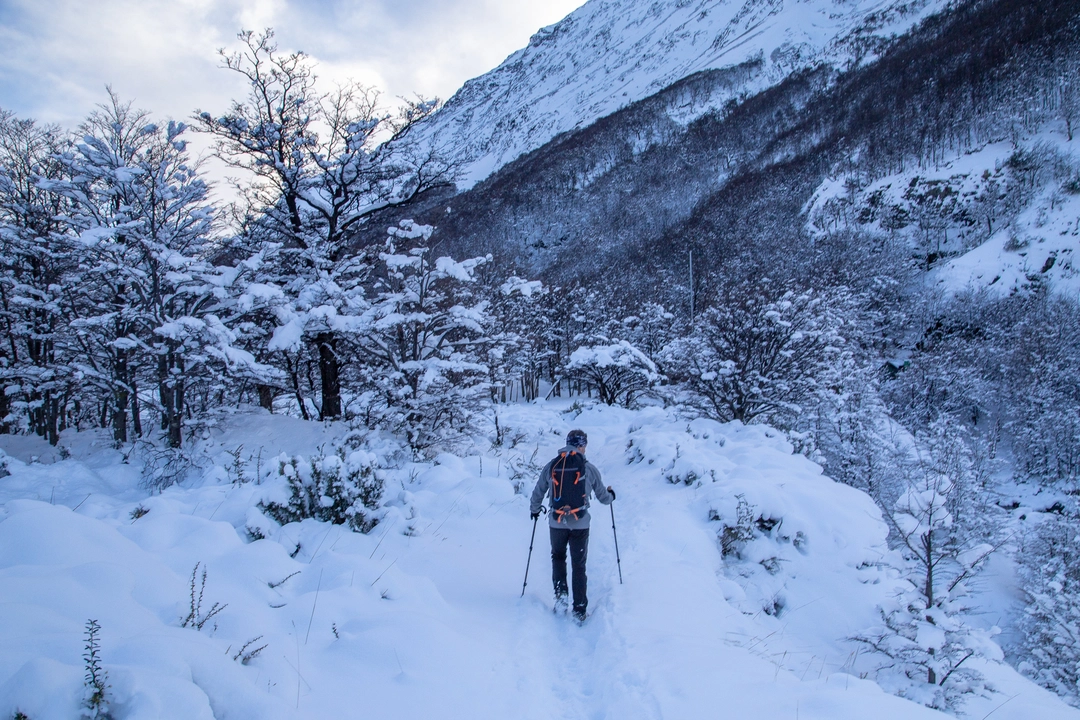If you’ve ever wanted to see humpback whales breaching, visit a penguin colony, and sail through waters teeming with sea lions, dolphins, and other marine animals, Tierra del Fuego in southern Chile and Argentina is the place to go.
Perched on the curling tip of the South American continent, the 18,000+ square miles of Tierra del Fuego are flush with creeping glaciers, mist-shrouded forests and fjords, and aegean blue waterways steeped in nautical legends and folklore. Dubbed the “Land of Fire” or “Fireland” by Portuguese sailor and explorer Ferdinand Magellan (namesake of the Magellan Strait) after he spotted multiple fires from native tribes burning on the shore, this water-drenched land of fire is a haven for some of the world’s most diverse marine wildlife, including seals, dolphins, and the gentle giants of the oceans: whales.
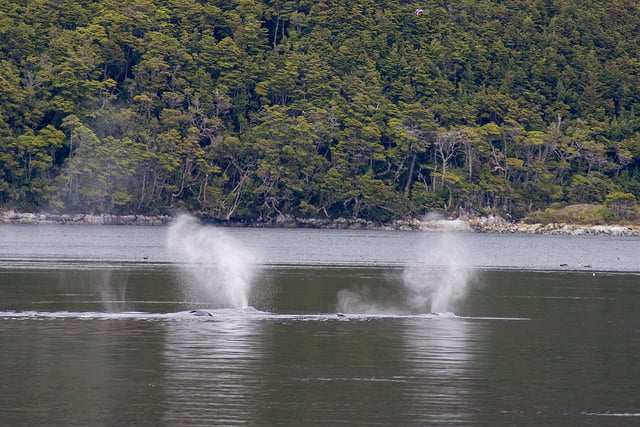
Whales
Visitors flock to Tierra del Fuego in the hopes of being among the rare few to witness one of most enthralling sights anywhere on the planet: a whale in its natural habitat. Thanks to the sheltered waters, unique underwater topography which allows whales to move closer to shore safely, and abundance of krill and minerals, the chances of a sighting (and maybe even a breaching, the holy grail of whale sightings) are good, especially during the summer months of December through March, when whales migrate around Cape Horn to mate and give birth.
The most frequent sightings are of southern right whales, followed by humpback whales, blue whales, grey whales, southern minkes, southern fins, and southern sei whales. On the Argentine side of Tierra del Fuego, close to the town of Ushuaia on the Beagle Channel, orcas (killer whales) have also been seen.
A popular spot for sightings and observation is the 416 square mile Francisco Coloane Marine Park near Punta Arenas, Chile. The first aquatic reserve in Chile (it has since been joined by the "Nazca-Desventuradas Marine Park" further up the coast, the largest marine park in the world), during breeding it becomes a watery home to humpbacks, minkes, and southern rights, as well as seals and penguins. Visitors have the best chance of making a sighting between January and April, but the observation season officially lasts from November to May. For the ultimate thrill, go sea-kayaking through these whale-filled waters for a whale of a time! Even if the whales are being shrewd, the vistas of nearby glaciers and fjords still make for a lovely outing.
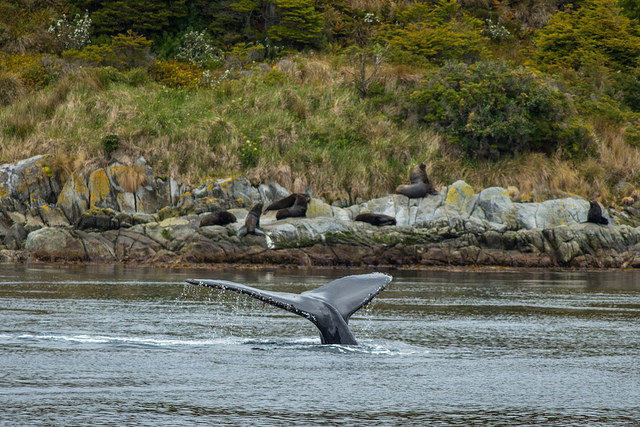
Penguins
Apart from the whales, Tierra del Fuego’s penguin colonies are arguably the region’s biggest draw for nature lovers and wildlife enthusiasts.
The most common penguin of Fuegian waters is the Magellanic penguin, also named after Ferdinand Magellan who was the first to record observations about them during an expedition in 1519.
A colony of more than 150,000 mating pairs spends September-March on the tiny island of Isla Magdalena, located a short ferry ride from Punta Arenas, where they breed and raise their chicks before migrating further up the coast for food and warmer weather during the winter months. Even though the island is a national monument and is protected because of its importance as a breeding site (Magellanic penguins are endangered due to frequent oil spills, which kills upwards of 42,00 penguins per year, as well as loss of food from overfishing by humans), there is a marked-off hiking path around the island which guests can walk through and observe the penguins and their breeding grounds at close quarters.
There are up to 10 Magellanic penguin colonies throughout Chilean and Argentine Patagonia (Isla Magdalena is the largest), and the species is monitored by scientists and conservation groups.
In addition to the Magellanic penguin, Humboldt, Gentoo, and Rockhopper penguins also have breeding colonies throughout the region. But a true rarity amongst the local penguin colonies is the king penguin colony at King Penguin Park.
In 2010, a group of eight King penguins (the second largest penguin in the species, just after the emperor penguin of “March of the Penguins” fame) set up a small colony in Bahía Inútil, much to the surprise of the locals. King Penguins are native to the Sub-Antarctic islands farther south, and rarely venture this close to the mainland, much less to create a colony. To protect the colony (which has since grown), the King Penguin Park was opened in 2011 to allow visitors to safely observe and learn about the penguins, and to help conserve the species.
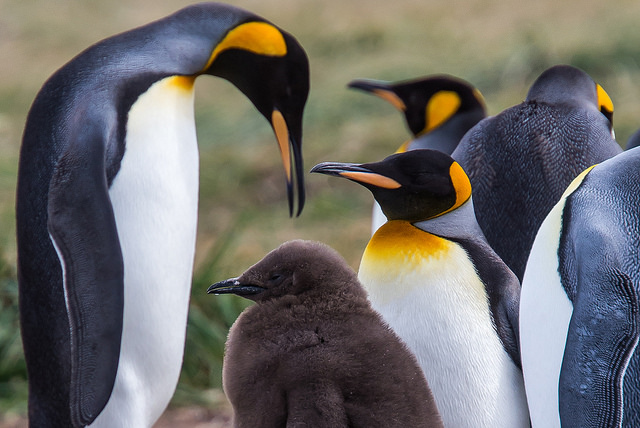
Dolphins
There are two types of dolphins most commonly found in Tierra del Fuego: the Commerson’s dolphin, and Peale’s dolphin.
Peale’s dolphin, distinguishable by its small body and fluid grey-white markings, is the only dolphin which cannot whistle. Killed en masse during the 1970s and 1980s by local fisherman who used their flesh as crab bait, the species is not overtly endangered, but conservation groups have started to voice concern that more concentrated efforts need to be made to preserve their numbers. Despite the killing, they remain the most prolific dolphins in the area, and can be found up and down the southern coasts of Chile and Argentina, gliding through the water at fast speeds.
The Commerson’s dolphin is instantly recognizable by its bold black and white markings, leading it to also be known as the “panda dolphin.” It is found along the coast of South America, but is unique in that a similar, related subspecies also exists in the Indian Ocean, with slight variations in body shape and coloration. Like the Peale dolphin, they have also been killed for crab bait, and are frequently caught in gillnets closer to shore, which they can access due to their small build.
Luckily, thanks to a boom in tourism in Tierra del Fuego’s towns and nature reserves, more awareness is being raised about the threats facing Peale’s and Commerson’s dolphins, so better conservation efforts can be undertaken.
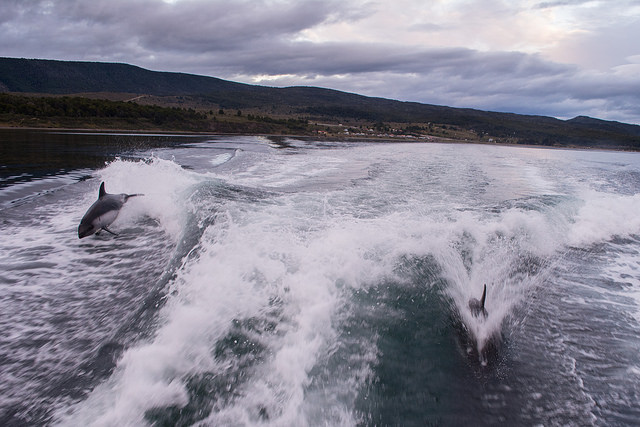
Sea Lions
A common sight around Tierra del Fuego are the area’s hordes of seals and sea lions, who feed on fish and krill, and live in the region year-round.
One of the best spots to observe the seals and sea lions at their leisure is at the pinniped-extravaganza of Isla Marta, located near Isla Magdalena. The tiny island - which is protected and off-limits to tourists - is home to thousands of elephant seals, South American sea lions, and South American fur seals. Males establish territories on the beaches that encompass large groups of females with which he mates (mating season for the sea lions takes place from September to December, with pups being born from December through February). The males fiercely defend their territory and protect their harem of females, and fights between competing males can become bloody and even deadly. This is especially true of elephant seals, whose sharp teeth draw blood quickly and the mammoth size of alpha males should be daunting to any would-be competitor.
Tierra del Fuego’s waterways are also the hunting grounds for carnivorous leopard seals, who prey on penguins, as well as krill and fish.
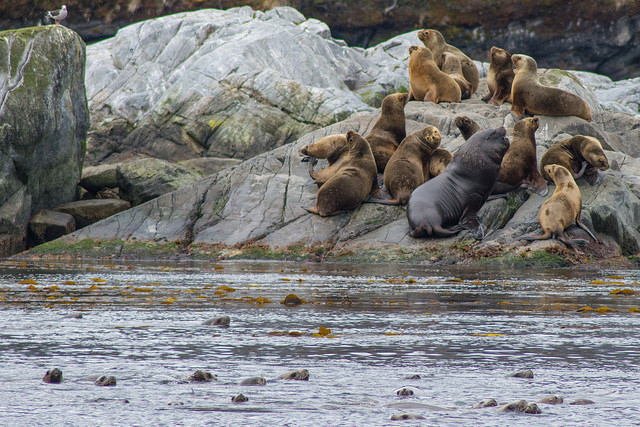
Dive into the ecologically diverse and fascinating world of Tierra del Fuego's waterways with our wide range of programs here!
- Half Day Magellan Strait Penguin Adventure
- Full Day King Penguin Viewing Excursion

_miniatura.webp)
_resultado_miniatura.webp)
